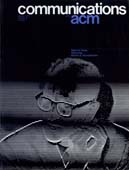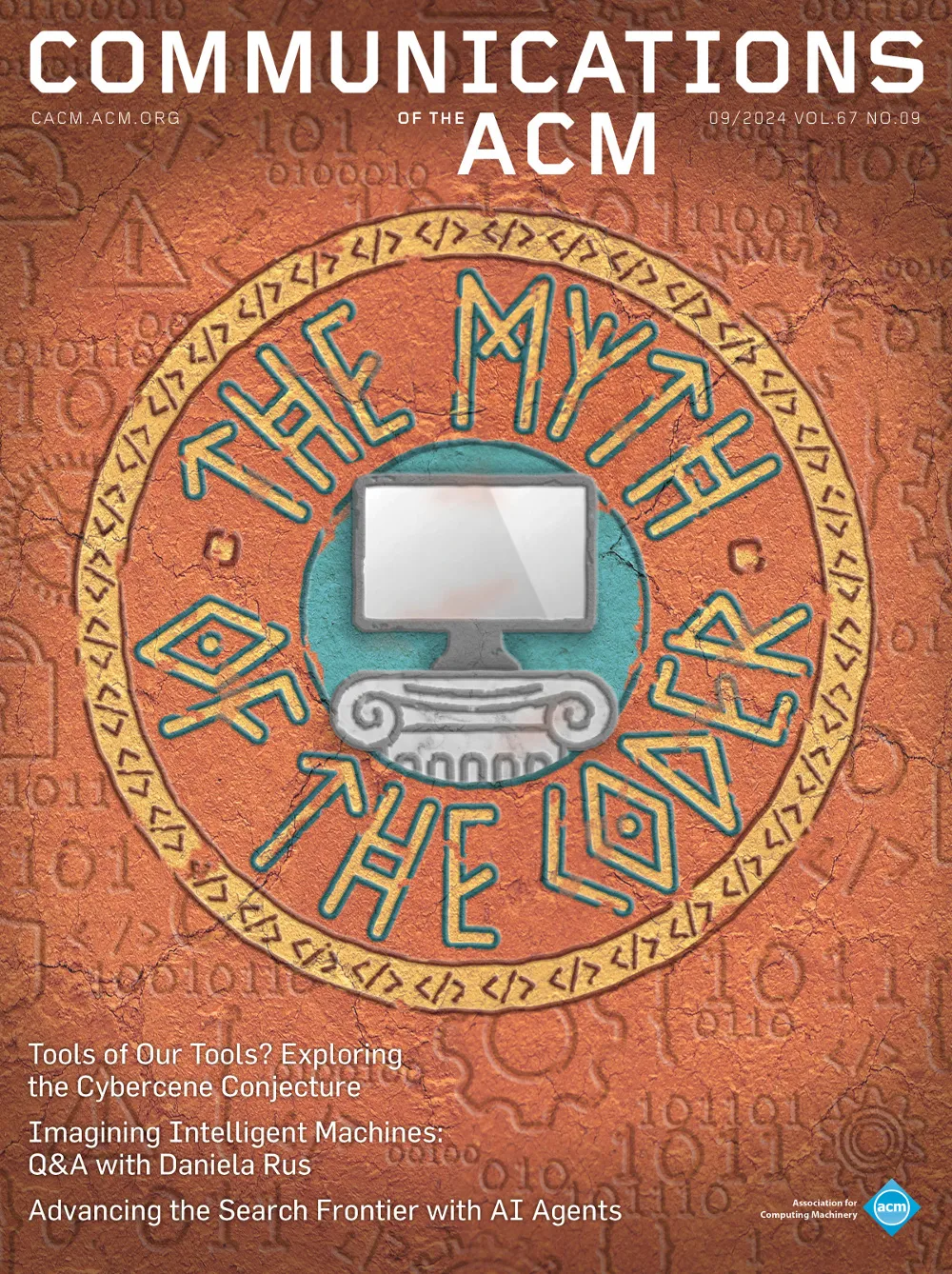January 1975 - Vol. 18 No. 1

Features
Professionalism in the computing field
The term professional means different things to different people; nevertheless, there are certain general technical and social standards normally associated with a professional. Further, the term is more generally applied to the practitioner rather than to the researcher. But within the rather broad definition specified, the computing practitioner is, as yet, not regarded as a professional.
Each of the four types of institutions—academic, industry, government, and the professional society—that educate, employ, regulate, and mold the practitioner contributes to the “nonprofessional” status of the computing practitioner. The roles of these institutions are examined, various shortcomings are noted, and recommended changes are suggested.
In the last analysis, professional status is not bestowed; it is earned. However, universities and industry, specifically, can make certain improvements to help the computing practitioner achieve professional status.
Following some lines of joint work with A.S. Householder, the character and use of algebraic methods in the theory of norms is demonstrated. New results concerning norms with values in an Archimedian vector lattice (not necessarily being totally ordered) are given, in particular for the generalization of order unit norms, L-norms and M-norms. An example of application to operator norms is given concerning contraction properties of positive operators.
The lemniscate constants, and indeed some of the methods used for actually computing them, have played an enormous part in the development of mathematics. An account is given here of some of the methods used—most of the derivations can be made by elementary methods. This material can be used for teaching purposes, and there is much relevant and interesting historical material. The acceleration methods developed for the purpose of evaluating these constants are useful in other problems.
On the stability of Gauss-Jordan elimination with pivoting
The stability of the Gauss-Jordan algorithm with partial pivoting for the solution of general systems of linear equations is commonly regarded as suspect. It is shown that in many respects suspicions are unfounded, and in general the absolute error in the solution is strictly comparable with that corresponding to Gaussian elimination with partial pivoting plus back substitution. However, when A is ill conditioned, the residual corresponding to the Gauss-Jordan solution will often be much greater than that corresponding to the Gaussian elimination solution.
Two Hadamard numbers for matrices
A discussion is given of two functions of the entries of a square matrix, both related to Hadamard's determinant theorem, which have some merits as alternatives to norm-bound “condition numbers.” One (for linear systems) is known; the other (for eigensystems) seems to be new.
Perturbations of eigenvalues of non-normal matrices
The problem considered is to give bounds for finite perturbations of simple and multiple eigenvalues &lgr;i of nonnormal matrices, where these bounds are in terms of the eigenvalues {&lgr;i}, the departure from normality &sgr;, and the Frobenius norm ‖ &Dgr;A ‖ F of the perturbation matrix, but not in terms of the eigensystem. The bounds which are derived are shown to be almost attainable for any set of all matrices of given {&lgr;i} and &sgr;. One conclusion is that, very roughly speaking, a simple eigenvalue &lgr;1 is perturbed by |&Dgr;&lgr;1| ≲ ‖ &Dgr;A ‖F · ∏ (&sgr;/&thgr;j) where &thgr;j is of the order of magnitude of |&lgr;1 - &lgr;j|, the product being extended over all j where &thgr;j ≲ &sgr;.
Elementary divisors of tensor products
The elementary divisors of a tensor product of linear transformations have been known for 40 years. This paper provides a short, easily accessible proof of these results, and points out an interesting combinatorial consequence of the proof.
Pseudoinversus and conjugate gradients
This paper is devoted to the study of connections between pseudoinverses of matrices and conjugate gradients and conjugate direction routines.
The new math of computer programming
Structured programming has proved to be an important methodology for systematic program design and development. Structured programs are identified as compound function expressions in the algebra of functions. The algebraic properties of these function expressions permit the reformulation (expansion as well as reduction) of a nested subexpression independently of its environment, thus modeling what is known as stepwise program refinement as well as program execution. Finally, structured programming is characterized in terms of the selection and solution of certain elementary equations defined in the algebra of functions. These solutions can be given in general formulas, each involving a single parameter, which display the entire freedom available in creating correct structured programs.
Storage-efficient representation of decimal data
Usually n decimal digits are represented by 4n bits in computers. Actually, two BCD digits can be compressed optimally and reversibly into 7 bits, and three digits into 10 bits, by a very simple algorithm based on the fixed-length combination of two variable field-length encodings. In over half of the cases the compressed code results from the conventional BCD code by simple removal of redundant 0 bits. A long decimal message can be subdivided into three-digit blocks, and separately compressed; the result differs from the asymptotic minimum length by only 0.34 percent. The hardware requirement is small, and the mappings can be done manually.
Connections between accuracy and stability properties of linear multistep formulas
This paper is concerned with stability and accuracy of families of linear k-step formulas depending on parameters, with particular emphasis on the numerical solution of stiff ordinary differential equations. An upper bound, p = k, is derived for the order of accuracy of A∞-stable formulas. Three criteria are given for A0-stability. It is shown that (1) for p = k, k arbitrary, A∞-stability implies certain necessary conditions for A0-stability and for strict stability (meaning that the extraneous roots of &rgr;(&zgr;) satisfy |&zgr;| < 1); (2) for p = k = 2, 3, 4, and 5, A∞-stability (for k = 5 together with another constraint) implies strict stability; and (3) for certain one-parameter classes of formulas with p = k = 3, 4, and/or 5, A∞-stability implies A0-stability.
Stably updating mean and standard deviation of data
By considering the (sample) mean of a set of data as a fit to this data by a constant function, a computational method is given based on a matrix formulation and Givens transformations. The (sample) mean and standard deviation can be updated as data accumulates. The procedure is numerically stable and does not require storage of the data. Methods for dealing with weighted data and data removal are presented. When updating the mean and square of the standard deviation, the process requires no square roots.



